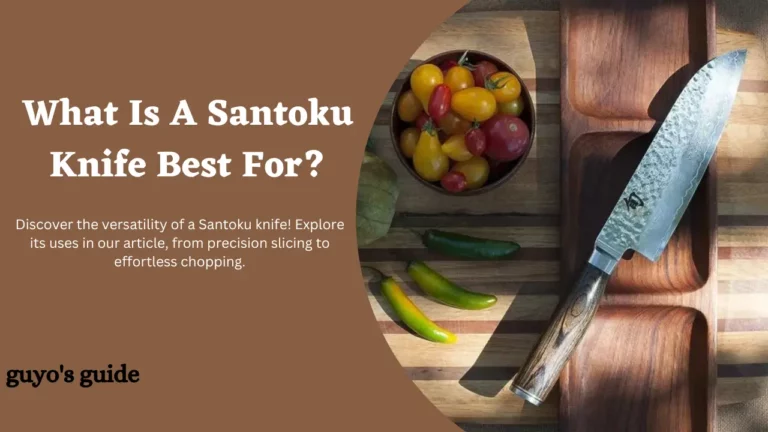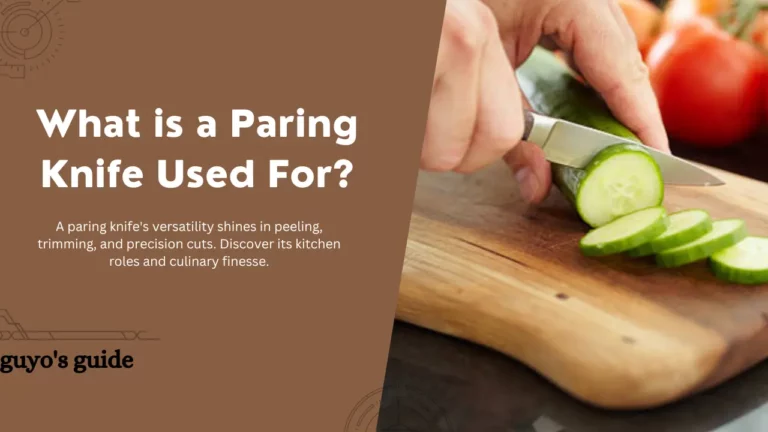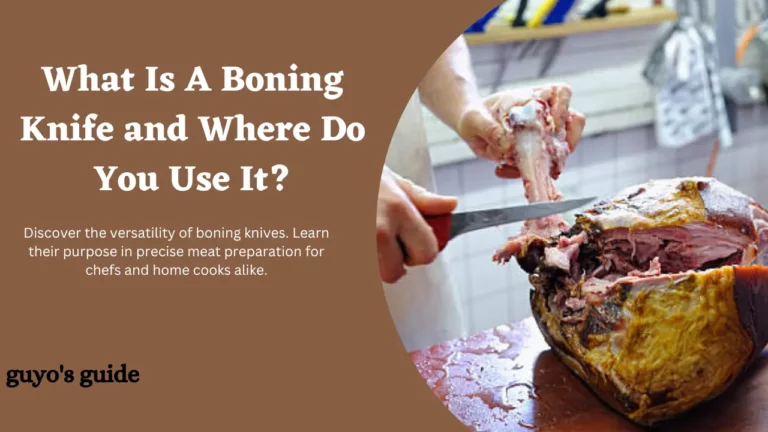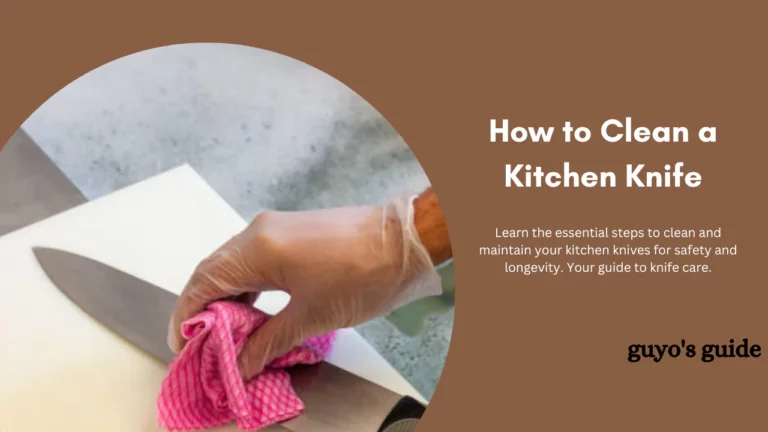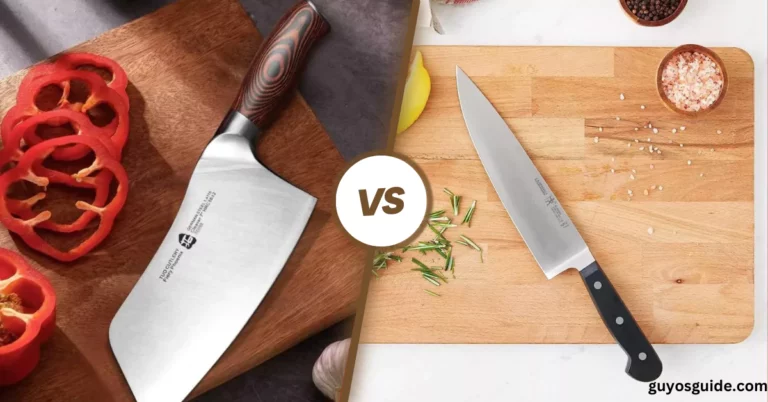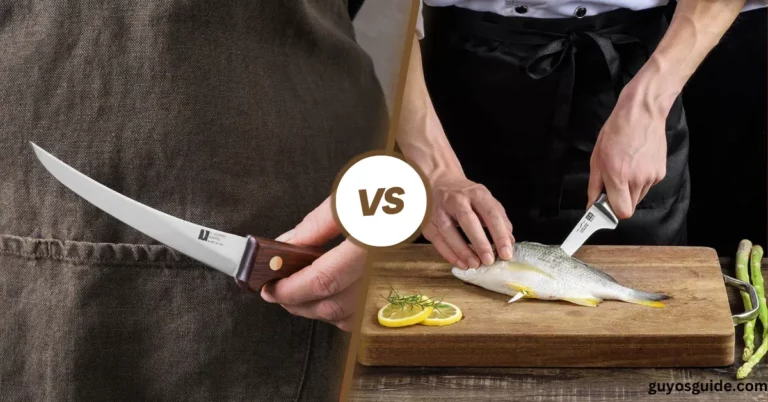What is a Chef’s Knife Used for?
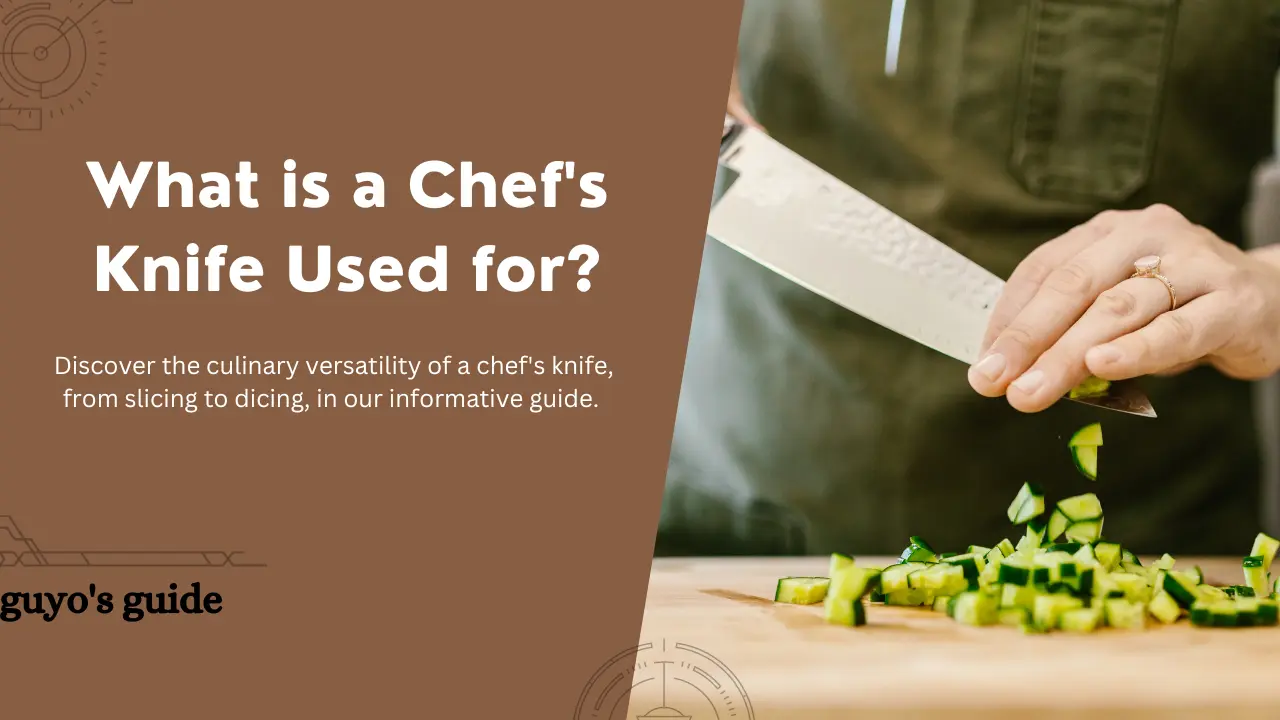

A chef knife is a versatile and essential tool for any culinary enthusiast or professional. With its sharp blade and ergonomic handle, this kitchen utensil is designed to handle a wide range of tasks.
From slicing and dicing vegetables to carving meats, a chef knife is the go-to choice for precision and efficiency in the kitchen.
In this blog post, we will explore the various uses of a chef knife and why it is a must-have for every home cook.
Whether you are a beginner or an experienced chef, understanding the purpose and functionality of a chef knife will elevate your cooking skills to new heights.
Let’s get started.
What is a Chef’s Knife?
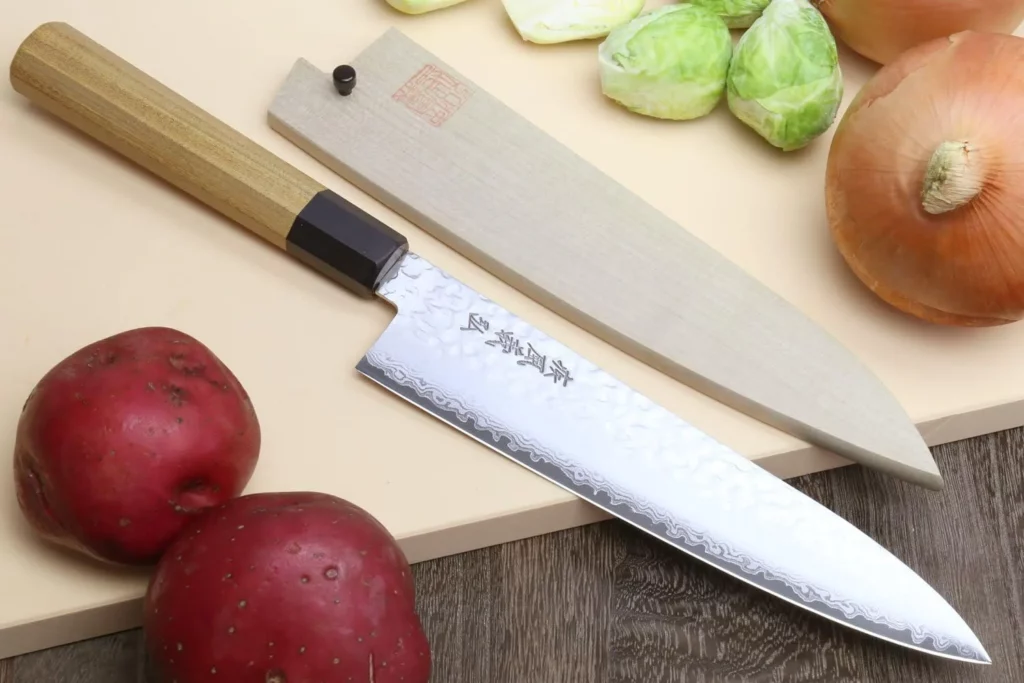
A chef’s knife, also known as a cook’s knife or French knife, is a versatile and essential tool in the kitchen, primarily used for chopping, slicing, and dicing a wide variety of ingredients.
It typically features a wide, sharp blade that tapers to a point, allowing for precise cutting and chopping motions.
It is one of the most important knives in a chef’s or home cook’s collection and is characterized by its broad, tapered blade, typically measuring around 6 to 10 inches (15 to 25 centimeters) in length.
Uses of a Chef Knife in The Kitchen
A chef’s knife is one of the most versatile and essential tools in the kitchen. Here is a definitive guide on the various uses of a chef knife:
1. Slicing
Use a chef’s knife to slice various ingredients, such as vegetables, fruits, and meats. It’s ideal for achieving thin, even slices.
2. Dicing
The rocking motion of a chef’s knife makes it perfect for dicing vegetables like onions, carrots, and peppers into uniform pieces.
3. Chopping
The broad blade and sharp edge of a chef’s knife make it efficient for chopping herbs, nuts, and larger items like cabbage or watermelon.
4. Mincing
Achieve finely minced ingredients like garlic, shallots, or herbs with the chef’s knife. Its precise control helps avoid bruising or over-processing.
5. Julienning
Create fine, matchstick-like strips of vegetables, like carrots or zucchini, for salads and garnishes.
6. Peeling
While, not its primary function, a chef’s knife can be used for peeling fruits or vegetables when you need a quick alternative.
7. Deboning
Remove bones from poultry or fish with the precision of a chef’s knife. Its pointed tip allows for detailed work. For better results, it is recommended you use a boning knife.
8. Trimming
Trim excess fat or unwanted parts from cuts of meat or poultry.
9. Butchering
While it’s not a substitute for a dedicated butcher’s knife, a chef’s knife can be used for basic butchering tasks, like breaking down a chicken.
10. Crushing
The broad side of the chef’s knife can be used to crush garlic or other items like nuts or peppercorns.
11. Smashing
Flattening items like garlic cloves or small potatoes can be done by laying the flat side of the blade on top and giving it a gentle press with your hand.
12. Scooping
The flat side of the blade can be used to transfer chopped ingredients from the cutting board to the pan or pot.
13. Slicing through hard-skinned produce
Use the heel of the chef’s knife to slice through items like squash or melons.
14. Slicing bread
In a pinch, a chef’s knife can be used to slice bread, although a serrated bread knife is better suited for this task.
15. Opening packages
A chef’s knife can be used to open packages or cut through tough packaging material.
16. Cracking shellfish
Use the back of the chef’s knife to crack open crab or lobster shells.
17. Shaping food
Shape or trim food items for presentation, such as rounding the edges of a cucumber or trimming excess fat from a steak.
18. Slicing cheese
While not ideal for all types of cheese, a chef’s knife can be used to slice semi-soft to firm cheeses.
Care and Maintenance of a Chef Knife
Proper care and maintenance of a chef’s knife are essential to keep it sharp, safe, and in good working condition. Here are some tips to help you maintain your chef knife:
Hand washing
Always wash your chef’s knife by hand rather than using a dishwasher. Harsh dishwasher detergents and high water pressure can damage the blade and handle. Use warm, soapy water and a non-abrasive sponge or cloth to clean the knife.
Dry immediately
After washing, dry the knife with a clean towel immediately to prevent water spots and potential rust. Avoid air drying as this can lead to water spots and damage the blade.
Cutting surface
Use a soft cutting board made of wood or plastic. Avoid cutting on hard surfaces like glass, marble, or ceramic, as they can dull the knife quickly. A good cutting board helps protect both the knife and the surface you’re working on.
Proper cutting technique
Use proper cutting techniques to prevent unnecessary stress on the blade. Avoid twisting or prying with the knife, as this can lead to chipping or bending. Slice and chop using a rocking motion with a sharp blade for the best results.
Honing
Regularly use a honing steel to realign the knife’s edge. Honing doesn’t sharpen the blade but helps maintain its sharpness. Hold the steel vertically and at a 20-degree angle, then slide the knife down the steel from base to tip, alternating sides.
Sharpening
Periodically, your chef knife will need sharpening to maintain its cutting edge. You can use a sharpening stone, or a honing guide, or take it to a professional knife sharpener. Follow the manufacturer’s recommendations for the correct angle and technique when sharpening.
Storage
Store your chef knife in a knife block, magnetic strip, or a blade guard to protect both the blade and your hands. Avoid tossing it into a drawer with other utensils, as it can damage the edge and be dangerous to retrieve.
Food selection
Be cautious when using your knife on hard or frozen foods. It’s best to use a cleaver or a knife specifically designed for these tasks to prevent damage to your chef’s knife.
Maintenance
Routinely inspect your knife for any signs of damage, such as nicks, chips, or bent tips. Address these issues promptly to prevent further damage or injury.
Handle care
Some chef knives have wooden handles, which can be damaged if soaked in water or exposed to excessive moisture. Dry the handle if it gets wet, and occasionally treat it with mineral oil or a wood conditioner to prevent drying and cracking.
FAQs
What is the primary purpose of a chef knife?
The primary purpose of a chef knife is for cutting, slicing, chopping, and dicing a wide variety of ingredients in the kitchen.
What are the key features of a chef knife?
Chef knives typically have a sharp, pointed blade, a comfortable handle, and a curved cutting edge. They are usually about 8 to 10 inches in length.
What types of ingredients can you cut with a chef’s knife?
A chef’s knife is used for cutting fruits, vegetables, meats, herbs, and many other food items. It’s a multipurpose tool suitable for a wide range of tasks.
Can a chef’s knife be used to fillet fish or bone meat?
While a chef knife can perform these tasks, there are specialized knives like boning knives and fillet knives that are better suited for such purposes due to their flexibility and precision.
How should I hold a chef’s knife?
Hold the knife with a firm grip on the handle and your fingers curled around it, using a pinch grip. This provides control and reduces the risk of accidents.
What is the proper cutting technique with a chef’s knife?
Use a rocking motion when cutting with a chef knife. Keep the tip of the knife in contact with the cutting board while gently rocking the blade back and forth to slice or chop ingredients.
Wrap Up
A chef knife is the undisputed workhorse of the kitchen. Its versatility and precision make it an indispensable tool for both professional chefs and home cooks alike.
From slicing and dicing to chopping and mincing, this kitchen essential simplifies a wide range of culinary tasks.
By understanding its uses and proper care, you can elevate your cooking experience and ensure your chef knife remains a faithful companion in the heart of your kitchen for years to come.
Happy cooking!

